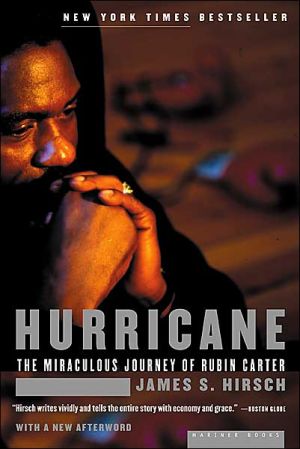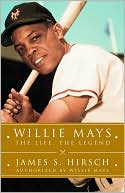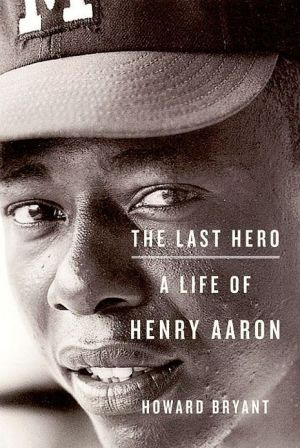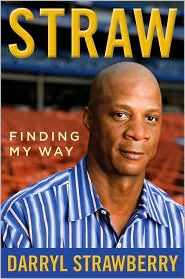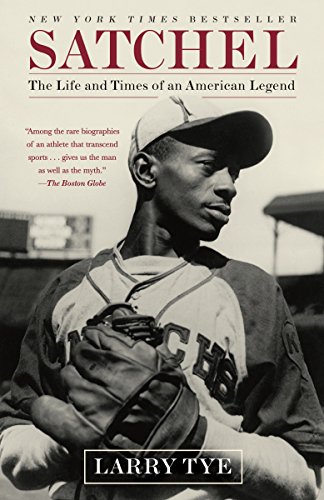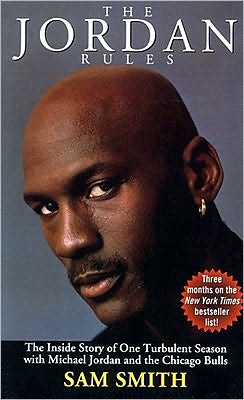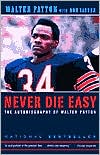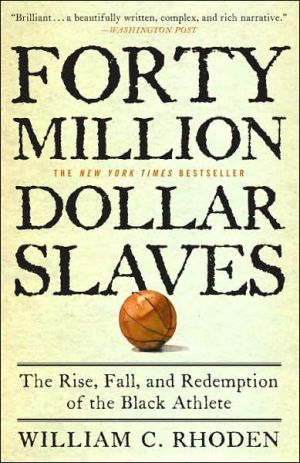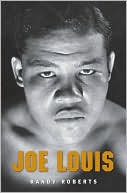Hurricane: The Miraculous Journey of Rubin Carter
In 1967, the black boxer Rubin "Hurricane" Carter and a young acquaintance, John Artis, were wrongly convicted of triple murder by an all-white jury in Paterson, New Jersey. Over the next decade, Carter gradually amassed convincing evidence of his innocence and the vocal support of celebrities from Bob Dylan to Muhammad Ali. He was freed in 1976 pending a new trial, but he lost his appeal—to the amazement of many—and landed back in prison.\ Carter, bereft, shunned almost all human contact...
Search in google:
Hirsch, a former staff writer for the Wall Street Journal and the New York Times, recounts the harrowing odyssey from despair to freedom of Rubin "Hurricane" Carter, a black boxer wrongly accused of three murders. Over the course of a decade, he raged against imprisonment, amassed evidence of his innocence, and garnered the support of various celebrities. When he lost his appeal, he avoided almost all human contact, until he received a letter from a Brooklyn ghetto teenager who helped wage an international battle to free him. Includes b&w photos. Annotation c. Book News, Inc., Portland, ORNewsdayHirsch gives us an intimate portrait of Carter and the strange Canadian communalists/cultists who, by 1988, had helped him win his ultimate freedom.
\ Death House Rendezvous\ By 1980, New Jersey's notorious Death House had been revived as a lovers' alcove, but Rubin "Hurricane" Carter still wanted no part of it.\ The Death House was Trenton State Prison's official name for the brick and concrete vault where condemned men lived in tiny cells and an electric chair stood hard against a nearby wall. The first inmate reached the Death House on October 29, 1907. Six weeks later he was dead, his slumped body shaved and sponged down with salt water, the better to conduct the electricity. New Jersey continued to hang capital offenders for two more years. But soon enough the electric chair, with its wooden body, leather straps, and metal-mesh helmet, which discharged three mortal blasts of up to 2,400 volts, was seen as the most felicitous form of execution.\ At least one infamous death gave the site a brief aura of celebrity. Richard Bruno Hauptmann, convicted of murdering Charles Lindbergh's baby, was electrocuted in the brightly lit chamber at 8:44 p.m. on April 3, 1936. In later years, sentences were carried out at 10 p.m., after the "general population" prisoners had been placed in total lockup. An outside power line fed the chair to ensure that a deadly jolt did not interfere with the penitentiary's regular lighting. On occasion, "citizen witnesses" crowded into a small green room, with only a rope between them and the chair about ten feet away. The observers watched the executioner turn a large wheel right behind the seated man's ear, thereby activating the lethal current. The body, penitent or obdurate, innocent or guilty, alive or dead, pressed against the restraints until the current was shut off.\ The Death House confronted its own demise in 1972, when the U.S. Supreme Court outlawed the death penalty as cruel and unusual punishment. The electric chair, having singed the breath from 160 men, was suddenly obsolete. So prison officials found a new mission for the chamber: it became the Visiting Center.\ Despite its macabre history, the VC was a huge hit with most of the prisoners. It marked the first time that Trenton State Prison, a maximum-security facility, had allowed contact visits. Inmates could now touch their spouses, children, or friends. The metal bars were removed from more than two dozen Death Row cells near the archaic chair, its seven electric switches still in place. The rooms were not exactly cozy hideaways, but they became the unsanctioned venue for conjugal meetings. Inmates seeking a bit of privacy tried to reserve cells farthest away from the guards, and the arrangement, as described by some old-timers, gave rise to Death House babies.\ But Rubin Carter didn't care a bit. He refused to accept virtually anything the prison offered, and that included visits inside the reincarnated Death House.\ He was repulsed by the prospect of sharing an intimate moment among the souls of 160 men, some of whom he knew. Transforming this slaughterhouse into a visiting center, Carter believed, was like turning Auschwitz or Buchenwald into a summer camp for children. It was another way for the state to humiliate prisoners, to express its contempt for the new law that pulled the plug on its chair.\ Carter knew well that he could have been one of the chair's immolations. In 1967 he had been found guilty of committing a triple murder in Paterson, New Jersey. He adamantly claimed his innocence. The state sought the death penalty, but the jury returned a triple-life sentence instead. That conviction was overturned in 1976, but Carter was convicted of the same crime again later that year and given the same triple-life sentence.\ By the end of 1980, Carter had gone for almost four years without a contact visit. Since his second sentencing in February of 1977, he had not seen his son or daughter, his mother, his four sisters, or his two brothers. Most of his friends were also shut out. He and his wife had divorced. He saw his lawyers in another part of the prison.\ But now, on the last Sunday of the year, Carter had a visitor as the result of an unusual letter he'd received three months earlier. As a former high-profile boxer who was known around the country and even the world, he received hundreds of letters each year, but he rarely answered them. In fact, he didn't even open them, allowing them to pile up in his cell. Carter wanted nothing to do with the outside world.\ Then came a letter in September, his name and prison address printed on the envelope. Carter could never explain why he opened it except to say that the envelope had vibrations. The letter, dated September 20, 1980, was written by a black youth from the ghettos of Brooklyn who, oddly enough, was living in Toronto with a group of Canadians. The seventeen-year-old, Lesra Martin, wrote that he had read Carter's autobiography, The Sixteenth Round, written from prison in 1974, and it helped him better understand his older brother, who had done time in upstate New York. Lesra concluded the letter:\ All through your book I was wondering if it would have been easier to die or take the shit you did. But now, when I think of your book, I say if you were dead then you would not have been able to give what you did through your book. To imagine me not being able to write you this letter or thinking that they could beat you into giving up, man, that would be too much. We need more like you to set examples of what courage is all about!\ Hey, Brother, I'm going to let it go. Please write back. It will mean a lot.\ Your friend,\ Lesra Martin\ Lesra's words, his efforts to reach out, touched Carter. He responded on October 7. The one-page typewritten note thanked Lesra for his "outpouring of hope, concern and humanness . . . The heartfelt messages literally jumped off the pages."\ More letters followed between Lesra, his Canadian guardians - who had essentially adopted the youth to educate him - and Carter in which they discussed politics, philosophy, Carter's own case, and his appeal. But when Lesra asked if he could visit the prison at Christmastime - he was going to be in Brooklyn seeing his family - Carter replied noncommittally. That did not deter Lesra. The bond between the two - and, more important, between Carter and this mysterious Canadian commune that typically shunned friendships with the outside world - had been sealed.\ Winter's chill could be felt inside the Trenton State Prison on that last Sunday of December. Built in 1836 by the famed British architect John Haviland, the prison is a brooding, monolithic fortress. Haviland used trapezoidal shapes and austere giganticism to evoke a massive Egyptian temple. Scarab beetles, which symbolized the soul in ancient Egypt, were carved into the prison's pink limestone walls. Tributaries from the Delaware River flowed in front of the prison, in faint mimicry of the Nile.\ But by 1980 the waterways had long since dried up and the pink limestone had turned brown. Loops of razor-ribbon wire topped twenty-foot-high concrete walls, and stone-faced guards stood in gun towers. The prison yard, with a softball field, weight machines, and handball courts, was said to sit over a cemetery. The yard's red dirt was so dry that it was regularly sprayed with oil, creating a viscous sheen that rubbed off on inmates in crimson splotches.\ While the prison sought total control of its inmates, Carter defied the institution at every turn. He did not wear its clothes, eat in its mess hall, work its jobs, or participate in any organized activity. He refused to meet with prison psychiatrists, attend parole hearings, or carry his prison identification card. His rationale was simple: he was an innocent man; therefore, he would not be treated like a criminal. His defiance earned him several trips to a subterranean vault known as "the hole," where inmates were held in solitary confinement. He was also once banished to a state psychiatric hospital, where the criminally insane and other incorrigibles were disciplined.\ But Carter had a predatory instinct for survival, and he was eventually allowed to live quietly in his fourth-tier cell. He continued to fight for his freedom in the courts, but by now he had immersed himself in books on philosophy, history, metaphysics, and religion. Searching for meaning in his own life, he turned his cell into "an unnatural laboratory of the human spirit." He studied, wrote, and tutored other inmates about the need to look within themselves to find answers to the world outside.\ Carter had been on this personal journey for more than two years by the time a guard came to his cell and told him he had a contact visitor. Suspecting it was the letter-writing youth, Carter walked down his tier, through the center hub of the prison, and past the infirmary, which was conveniently next to the Death House. (The infirmary used to receive the electrocuted bodies.) Before entering the Death House, he gritted his teeth and disrobed for a strip search - standard procedure for every prisoner before and after a contact visit. Searching for contraband, a guard ran his hand through Carter's hair and looked inside his mouth, under his arms, beneath his feet, and up his rectum. This degrading invasion was another reason Carter avoided contact visits.\ Once inside the chamber, Carter reserved a cell on the lower tier, placing his plastic identification tag and a pack of Pall Malls on two chairs. The prison visitors soon filed in and quickly joined their friend or loved one. Finally, only two people were left - Carter and a slip of a youth. The young man was trembling.\ Growing up in the slums of Brooklyn, Lesra Martin knew plenty of people who had gone to prison, but this was his first time inside a pen. The high stone walls, metal gates, and claustrophobic corridors were imposing enough, but the brusque security checks were even more unnerving. He emptied his pockets, was frisked, was scanned by a hand-held metal detector, and had his right hand stamped with invisible ink. He had brought a package of Christmas cards, socks, and a hat from his Canadian guardians but was not allowed to deliver it because all packages have to come through the mailroom, where they are opened and inspected. Lesra registered and was given a number, but as he passed through the prison in single file, he was jarred by the guards' shrill orders.\ "Get back in line!"\ "Don't speak to the person in front of you!"\ "Have your ID ready!"\ "Put your things in your locker!"\ As Lesra stood in the waiting room, he finally heard "four-five- four-seven-two, up!"\ That was Carter's prison number. Lesra waited before a dim holding bay. As the steel doors opened and visitors began walking in, several women took deep breaths while others held hands. A guard checked the right hand of each visitor with a blue fluorescent light. After about twenty people filed in, the guard yelled, "Bay secure!" The doors shut, and there was a long moment of helplessness, of captivity. Then doors on the other side opened, and everyone moved out. The experience dazed Lesra, who had arrived wanting to cheer up a prisoner but was made to feel as if he had done something wrong himself.\ Rubin Carter understood the feeling.\ "You must be Lesra," Carter said. He saw a frightened but goodlooking young man about six inches shorter than he. (Carter was only five foot eight.) The prisoner's appearance stunned the teenager. Every picture Lesra had seen of Carter showed him with a clean-shaven head, a thick goatee, and a menacing stare. Now he had a full Afro, a mustache, and a smile. The two embraced, then walked to the cell Carter had reserved. They sat facing each other and leaned forward so passing guards could not hear their conversation.\ Lesra recounted his harrowing experience getting to the Visiting Center. "How do you survive in here?" he asked.\ "I don't acknowledge the existence of the prison," Carter said. "It doesn't exist for me."\ Lesra noticed that the guards patrolling the corridor did not walk as closely to their cell as to other cells, giving them a bit more privacy as a sign of respect. Lesra also heard inmates as well as guards refer to Rubin as "Mr. Carter." When Lesra called him "Mr. Carter," he laughed. "You can call me Rubin, or better yet, Rube." As the inmate explained his refusal to participate in prison activities, Lesra remembered the words of Bob Dylan's song "Hurricane," which had been released in 1975 amid an outpouring of celebrity support:\ \ But then they took him to a jailhouse\ Where they tried to turn a man into a mouse.\ \ The jailhouse, Lesra realized, had failed.\ He described how he left his home in Bedford-Stuyvesant and moved to Toronto, where his new Canadian family was educating him. The arrangement puzzled Carter, and he told Lesra he need not worry about being alone. "I know they're treating you well because of your smile, but if you're ever not happy there, you let me know," he said. The young man gave him the phone number to his home in Canada.\ About an hour passed. As the visit was about to end, a prisoner who had a Polaroid camera approached them.\ "You like me to take a picture of you and your son, Mr. Carter?"\ "Absolutely!" he responded.\ Lesra turned and began walking toward a wall that he believed would make a fine backdrop. Carter yanked him back.\ "We don't go that way," he said. "That's where the chair was."\ The electric chair had been removed a year or so earlier and was now in the Corrections Department Museum in Trenton. But the bolts were still in the ground, and the imprint of the chair was visible. The picture was taken against a different wall, with the two standing next to each other, smiles creasing their faces, Carter's arm draped across Lesra's shoulders.\ As the two walked toward the holding bay, Lesra said, "I wish I could just walk you right on out."\ "Don't worry," Carter said. "I'm with you."\ This encounter marked the beginning of Carter's reemergence from his self-imposed shell. He would always have a special bond with Lesra, but he would develop far more important ties with the Canadian commune, and its members would provide vital support on Carter's journey through the federal courts. At the same time, the group's strong-willed leader, Lisa Peters, and Carter would become intense but doomed soulmates in an unlikely prison love affair. But all that was in the future. After his visit to the Death House, Carter returned to his cell, lay down on his cot, and stared at the picture of Lesra and himself.\ \ Copyright (c) 2000 by James S. Hirsch. Reprinted by permission of Houghton Mifflin Company.\
1. Death house Rendezvous 12. Wild West on the Passaic 83. Danger on the Streets 194. Mystery Witness 395. A Force of Nature 606. Boxer Rebellion 877. Radical Chic Redux 1088. Revenge of Passaic County. 1349. Search for the Miraculous 15910. The Inner Circle of Humanity 18111. Paradise Found 19412. Powerful Appeals 21813. Final Judgment 24614. The Eagle Rises 26615. Vindication 28516. Tears of Renewal 312Epilogue 334Sources 341Acknowledgments 343Index 346
\ NewsdayHirsch gives us an intimate portrait of Carter and the strange Canadian communalists/cultists who, by 1988, had helped him win his ultimate freedom.\ \ \ \ \ Publishers Weekly - Publisher's Weekly\ This authorized biography of Carter by former Wall Street Journal and New York Times reporter Hirsch brings an objective historical perspective to the boxer's story. Scrupulously researched and expertly crafted, Hirsch's updated account of Carter's life is both a rich portrait of a complex man and a clear-eyed telling of a remarkable life. Despite his success in the ring, or because of it, Carter was a man with a bad reputation when he was wrongfully accused of a gruesome triple homicide. As a defiant black man with a mean streak, a criminal record and flamboyant tastes, Carter jarred the sensibilities of many whites in his hometown of Paterson, N.J., and Hirsch explores the role that race played in determining his fate. Carter's hellish ride through the judicial system and the heroic efforts to free him make for fascinating reading. Hirsch used the Canadian edition of Lazarus and the Hurricane (reviewed above) as a source for much of his material, and some scenes are straight out of the earlier book. But Hirsch also explores the nature of Carter's relationships with the Canadians, including his romance and marriage to Lisa Peters, which is treated as a mere footnote in the Canadians' account. When Carter finally became a free man in 1988, he spent several years living in the Canadians' commune, but their controlling nature led him to believe he had traded one prison for another, with a debt of gratitude tying him down. He eventually severed ties. (Jan.) Copyright 1999 Cahners Business Information.\ \ \ From The Critics“A nearly biblical tale of persecution, punishment, and redemption\ . . . Anyone curious about the persistence of Carter’s notoriety — or \ the accuracy of the movie — will find all the answers in Hurricane.”\ \ \ \ \ KLIATTThis is not a weather-related story. It is about the prizefighter Rubin "Hurricane" Carter, but it is not about his experience in the boxing arena. In fact, any aspirations for big paydays and title fights vanished on that June night in 1966 when Rubin Carter and a friend were arrested for a shooting in a Paterson, New Jersey nightspot. This authorized biography is the story of his long and bitter struggle to prove his innocence and his gradual growth and change from flashy "man-about-town" to advocate for social justice. The author writes in an almost conversational, fluid style and the pages turn quickly. Sixteen pages of photographs complement the text and there is a detailed index. It is unlikely that this book will appeal to fans of "the sweet science" of boxing but social activists, future attorneys, and lovers of nonfiction will be among its readers. The author presents Carter's situation from two perspectives. First, there is the judicial side, with 19 years of trials, appeals, testimony, etc., that bring about frustrations, delays, disappointments, and heartbreak. The other perspective deals with the changes in Carter. When he entered the prison system, he was morose and lived a monastic life. With the help of supporters, admirers, and friends, he slowly changed into a serious, introspective, compassionate person. The reader will be left with the feeling that the ex-boxer still has some problems but also has the strength to overcome them. KLIATT Codes: SA—Recommended for senior high school students, advanced students, and adults. 2000, Houghton Mifflin/Mariner, 358p, illus, bibliog, index, 22cm, 99-052703, $14.00. Ages 16 to adult. Reviewer: Professor John E. Boyd;Jenkintown, PA, March 2001 (Vol. 35 No. 2)\ \ \ \ \ Library JournalIn 1967, middleweight boxing contender Rubin "Hurricane" Carter was sentenced to three life sentences for murdering three white adults in a Paterson, NJ, bar. Both books demonstrate convincingly that this was a miscarriage of justice. Chaiton and Swinton were two members of the Canadian commune that worked for years to free Carter and that was, for a while, his home after his release from prison. Their book was originally published in Canada in 1991 and is the basis for the recent film The Hurricane (starring Denzel Washington). The commune first heard of Carter through Lesra Martin (Lazarus), who was a 15-year-old living in a tough Brooklyn neighborhood when Chaiton and Swinton met him on a business trip and brought him back to Toronto. Chaiton and Swinton devote most of their lively book to recounting Carter's struggle with the legal system and hellish prison conditions and to Lesra's adjustment to Canadian life. Hirsch, a former reporter for the New York Times and the Wall Street Journal, offers an excellent investigation of the Carter case and his life, including Carter's relationship with Lisa Peters, the domineering leader of the cult whom he married following his release from prison after serving 22 years. (Carter, as Hirsch notes, left the tension-filled commune because he had only traded one prison for another.) The internationally notorious Carter case was arguably the last cause c l bre of the Sixties Civil Rights-antiwar coalition. His tenacious fight for freedom was ultimately the greatest victory for this courageous battler. Both books are strongly recommended for public libraries, but because Hirsch's book provides courtroom details, delves into the actions of the commune, and updates Lesra's remarkable story, it's the preferred choice by a split decision. [Previewed in Prepub Alert, LJ 9/15/99 and LJ 10/15/99, respectively.]--Karl Helicher, Upper Merion Twp. Lib., King of Prussia, PA Copyright 2000 Cahners Business Information.\ \ \ \ \ Charles KaiserAnyone curious about the persistence of Carter's notoriety -- or the accuracy of the movie -- will find all the answers in ''Hurricane,'' an exhaustive biography by the journalist James S. Hirsch. Although this is an authorized work, Hirsch says that ''the interpretations and conclusions are my own.'' That the book wasn't censored is believable -- Hirsch never makes his subject into the unblemished Hollywood hero portrayed by Washington...[a] nearly biblical tale of persecution, punishment and redemption. \ —The New York Times Book Review\ \
